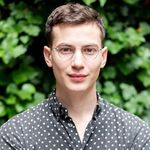When you look at a forest, what do you see? When we visited Madagascar, we saw a fractured home. We saw patches of forestland, separated by long stretches of arid soil. This mosaic of vegetation is the last remaining habitat of the lemur, of the narrow-striped mongoose, and of many other species that are found nowhere else on the planet.
After having lived on this great island for over forty million years, these species are now on the brink of extinction. Being confined to small forest patches exposes them to local incidents of fire and disease, reduces their food sources, and leads to inbreeding.
But there are solutions.
Together with Eden Reforestation Projects and the local community of tree-planters, we want to give these animals back their home. How? By planting narrow forest corridors that connect these isolated fragments of forestland.
Thanks to these corridors, animals will be able to roam from one patch of forest to another when foraging for food or searching for mates. While doing so, they will carry pollen and seeds to new areas. Thus, both fauna and flora populations will benefit from the corridors.
By choosing this planting method, we make sure that each tree you help us plant sets in motion a whole series of positive effects — so that your impact will spread outward into the future, like the ripples from a stone thrown into water.
 The Brown Mouse Lemur, endemic to Madagascar (Photo by Alex Dunkel and Freddie Barber)
The Brown Mouse Lemur, endemic to Madagascar (Photo by Alex Dunkel and Freddie Barber)
